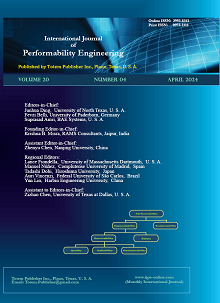-
Effective Software Defect Prediction: Evaluating Classifiers and Feature Selection with Firefly Algorithm
- Naveen Monga and Parveen Sehgal
-
2024, 20(4):
195-204.
doi:10.23940/ijpe.24.04.p1.195204
-
 Abstract
Abstract
 PDF (740KB)
PDF (740KB)

-
References |
Related Articles
A key component of software quality assurance is software error prediction, which aims to find probable flaws in software systems during the development stage. In this extensive study, we assessed the classification efficiency of four well-known classifiers for software defect prediction: Decision Tree, Multi-Layer Perceptron, Random Forest, and Multi SVM. Additionally, we revised the firefly method and developed a unique multi-objective fitness function that took into account both weighted error and area under the curve (AUC) in order to assess the fitness of the classifiers in feature selection. Using a diverse dataset comprising varying numbers of records, ranging from 500 to 5000, we calculated key performance metrics, including precision, recall, F-measure, classification accuracy, and receiver operating characteristic (ROC) curves. The average metrics for each classifier at 5000 records were as follows: In terms of precision, recall, F-measure, and accuracy, DT attained averages of 0.7974, 0.8133, and 0.8047. Similarly, MLP exhibited an average precision, recall, F-measure, and accuracy of 0.8130, 0.8041, 0.7984, and 0.7953, Random Forest exhibited 0.8138, 0.8047, 0.8172, and 0.7950, while Multi SVM exhibited 0.8032, 0.8117, and 0.8128, respectively.

